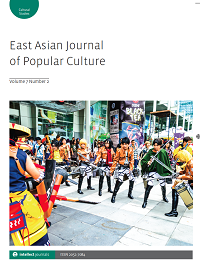
Full text loading...
 , Elaine Chung1
, Elaine Chung1
This article studies internet celebrity culture as a crucial site of public learning and pedagogy, exploring the capacity of celebrated foreign speakers of Chinese to popularize discourses and knowledge of the language on social media. It specifically focuses on the YouTube channel MYBY founded by Martin Wiley Woods and Blair Sugarman, two foreign television personalities in China who have successfully extended their fame from traditional media to the internet. Through a multimodal discourse analysis of their bilingual ‘talk shows’ in which they evaluate the Chinese pronunciation and accents of other non-native speakers and share their own learning experiences, we discuss how Woods and Sugarman perform their identities as both model learners and language influencers by producing and challenging the language ideologies of normativity and speakerhood. We argue that internet celebrity pedagogy is an increasingly important genre of popular culture that discursively shapes the global transmission of Chinese language and linguaculture.

Article metrics loading...

Full text loading...
References


Data & Media loading...

Publication Date:
https://doi.org/10.1386/eapc_00108_1 Published content will be available immediately after check-out or when it is released in case of a pre-order. Please make sure to be logged in to see all available purchase options.